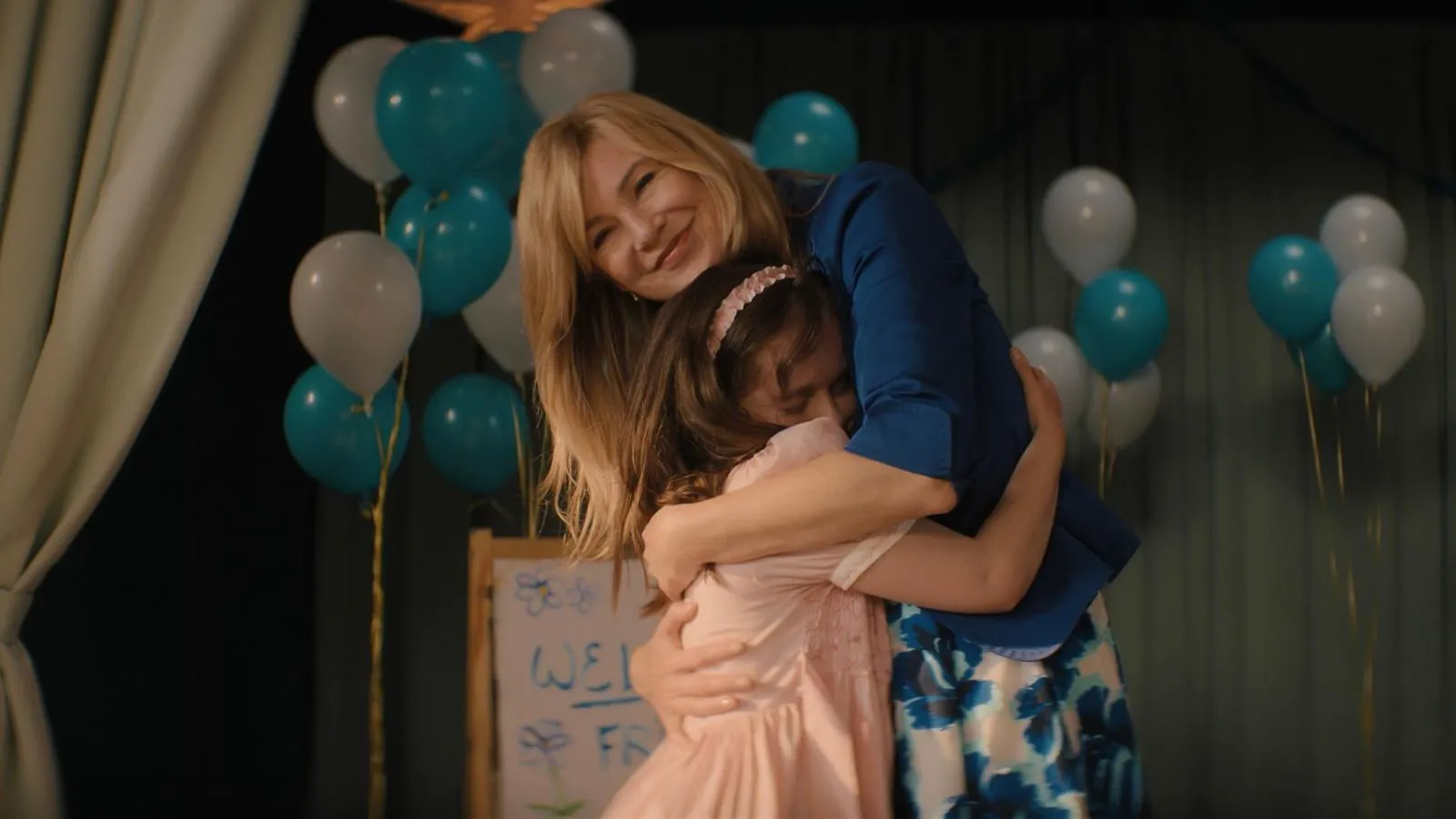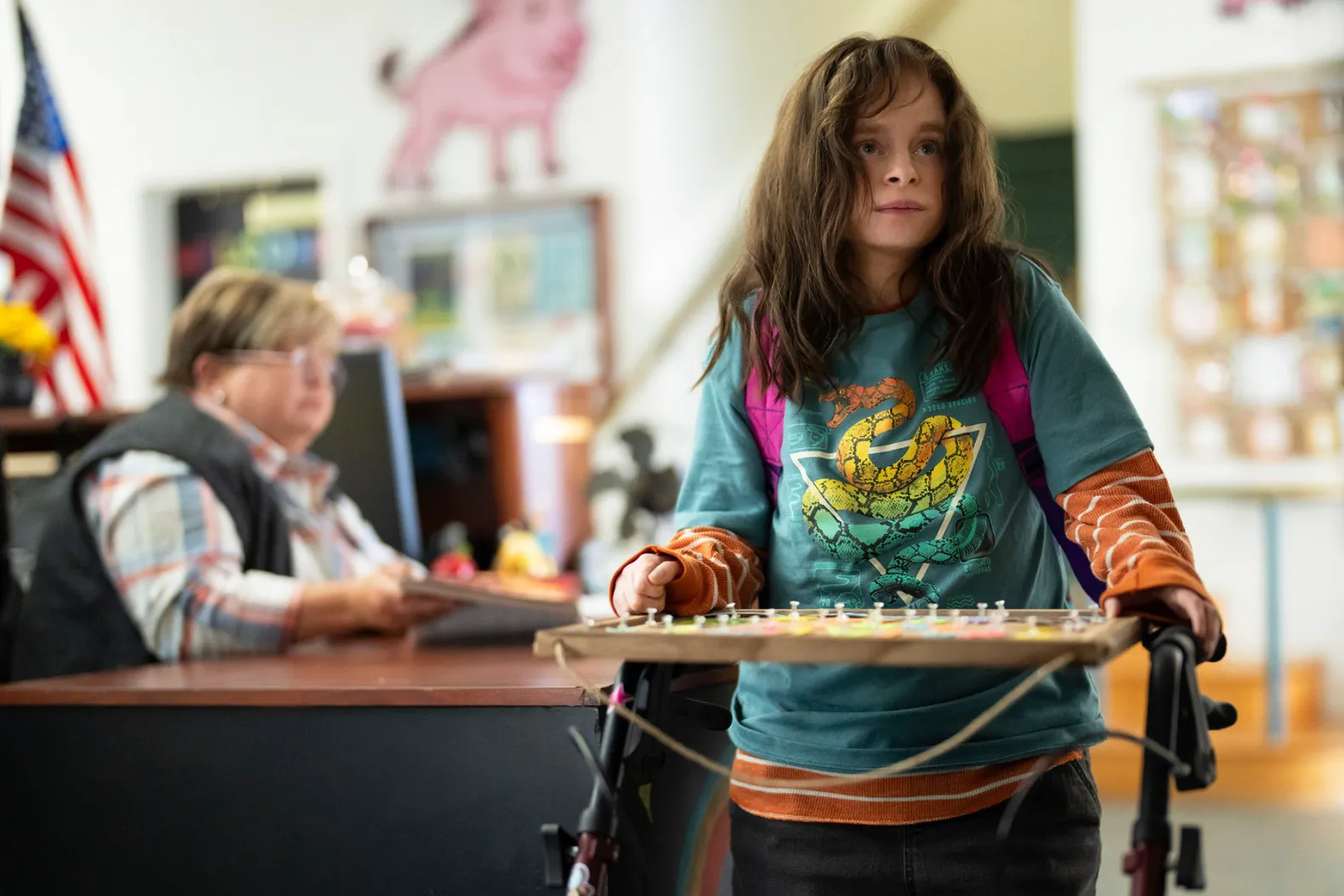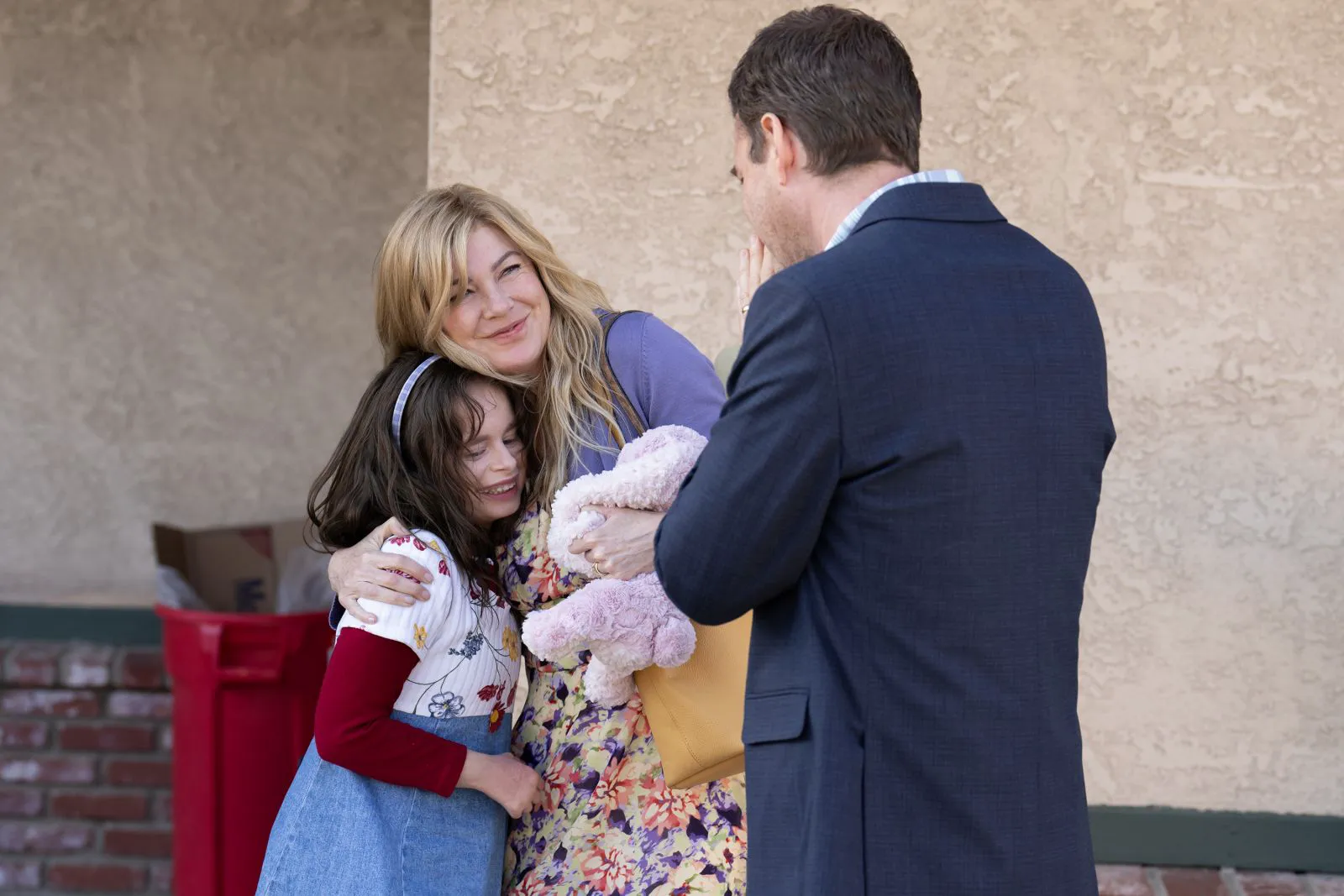The Barnetts, an seemingly ordinary family from Indiana, adopt a seven-year-old girl named Natalia Grace (Imogen Faith Reid) with a rare form of dwarfism. Christine (Ellen Pompeo), the mother, is inspired to help another child, having previously succeeded in raising her autistic son (and even founded a foundation to help children with special needs). However, from the moment Natalia arrives, she begins to exhibit strange behavior. While Michael (Marc Duplass) adores his “little princess,” excusing her for tearing up his youngest son’s toy and finding a knife under her bed, Christine grows increasingly suspicious. She eventually concludes that Natalia is lying about her age and may even pose a threat to the family. Gradually, care turns into fear, and fear into something far more sinister.
Warning: Spoilers Ahead! If you’re unfamiliar with the real story of Natalia Grace, it’s best to watch the series before reading further.

Ellen Pompeo as Christine in “The Curious Case of Natalia Grace: The Good Mother”
The Intriguing Case of Natalia Grace: A Dramatic Retelling
The incredible story of Natalia Grace has captivated the media for years, marked by legal battles, sensational claims from both sides, and conflicting accounts. In 2023, Investigation Discovery even released a documentary series, “The Curious Case of Natalia Grace,” which meticulously examined the circumstances surrounding the Barnetts’ encounter with Natalia. Now, Hulu presents a new dramatic adaptation that prioritizes emotional engagement. Under the guidance of showrunners Katie Robbins (“Sunny”) and Sarah Sutherland (“The Looming Tower”), along with documentarian Liz Garbus (“Who Killed Garrett Phillips?”), the real events are interwoven with fictional elements, amplifying tabloid headlines and transforming real people into dramatically exaggerated characters.

Imogen Faith Reid as Natalia in “The Curious Case of Natalia Grace: The Good Mother”
A Shift in Perspective: Victim or Perpetrator?
The creators deliberately avoid a singular subjective viewpoint, presenting details from different perspectives. Initially, we see the story through the eyes of the adoptive parents, then from Natalia’s perspective. In the early episodes, Natalia is portrayed as a child who terrifies her adoptive parents, with the series employing thriller and even horror elements. Christine repeatedly finds toy stuffing under the bed, household chemicals in a coffee mug, and buttons under the front door. Natalia seems to transform into a real-life version of Esther from “Orphan.” However, the second half of the series dramatically shifts its focus, depicting Natalia as a victim and the Barnetts as either severely misguided or deliberately portraying the child as a monster.
Emotional Manipulation or Genuine Exploration?
Unsurprisingly, the series evokes strong emotions, ranging from sympathy to anger, confusion to outrage. However, the more it attempts to elicit these emotions, the more suspicious it becomes. Does the project conceal its own shortcomings behind sensationalism, merely rehashing a familiar story in a new setting?

Imogen Faith Reid as Natalia in “The Curious Case of Natalia Grace: The Good Mother”
A He Said, She Said Narrative
Christine claims Natalia stands by her bed at night with a knife, while Michael asks Natalia not to tell her mother that he was fired. Natalia tears her brother’s toy and begs her father to hide the evidence of her aggressive behavior. The characters toss responsibility, lies, and truths back and forth like volleyballs: he said, she said, they saw/heard/suspected. The story, which has existed for years in newspaper articles, television reports, and forum discussions, has evolved into a three-season documentary series and then, riding a wave of popularity, into a dramatic show. The tragedy is dissected, fried in a pan of rumors and gossip, and then served to the audience in stages. Hulu releases the show, designed for binge-watching, one episode per week.
The Truth is Always More Complicated
“The Curious Case of Natalia Grace: The Good Mother” gives a voice to each participant and transforms the three-season documentary series into an eight-episode show. The story remains shrouded in mystery, but the narrative is more accessible to viewers who prefer brisk editing to a series of archival footage. The showrunners follow in the footsteps of true-crime enthusiast Ryan Murphy and leave aside reflections on the moral and ethical aspects of the issue and what it is like for Natalia Grace and other participants in the process to be objects of many years of close media attention.
The most important lesson the series teaches is that the truth is always more complicated than it seems. And the truth is that none of the participants in the story are villains in the full sense of the word - each carries the burden of mistakes and consequences. And the truth is that we will never know what really happened behind closed doors, who held the knife, and at what point the point of no return was passed. But accepting one’s own surrender can be very difficult.